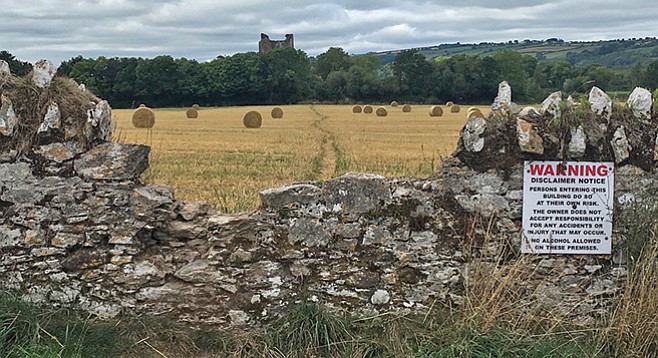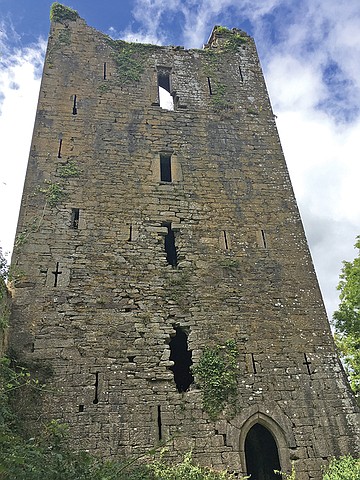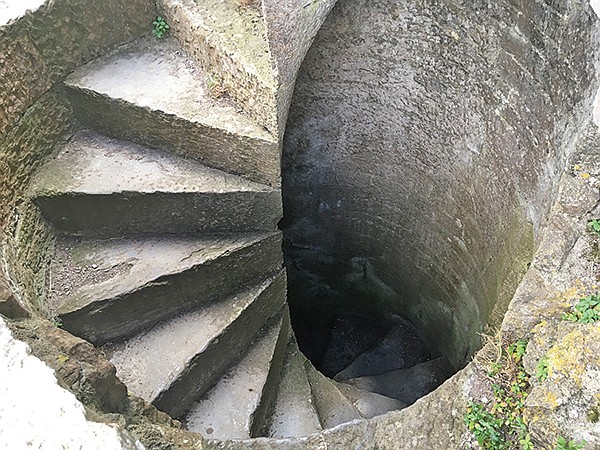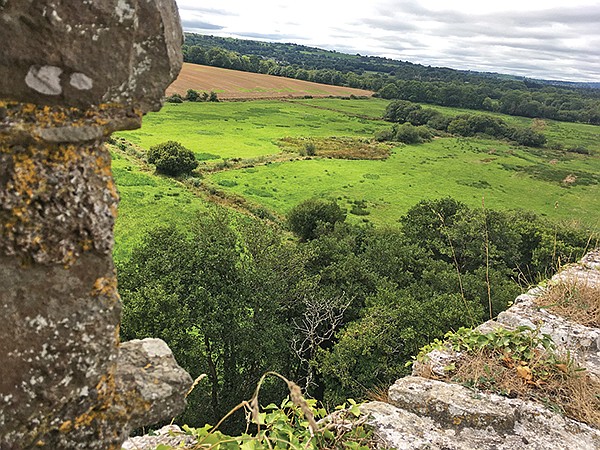 Facebook
Facebook
 X
X
 Instagram
Instagram
 TikTok
TikTok
 Youtube
Youtube

“We’re not tourists, we’re travelers,” explains Debra Winger in the trailer for 1990’s The Sheltering Sky. “Tourists are someone who thinks about going home the moment they arrive,” continues husband John Malkovich. “Whereas a traveler might not come back at all,” concludes Winger. I never saw the movie, but it didn’t matter; Winger’s distinction sounded like distilled wisdom to a small-town 17-year-old, and lodged deep in my sensibilities.

I went to Ireland last month for a number of reasons, among them to take a trip with my dad, to eat good bread and drink good whiskey, and to see ruins and landscapes: gray stone buildings that flourished centuries before brown California was built and a lush verdancy thoroughly alien to my everyday life.

The high point, literally and otherwise, came on the second day as we drove from Kinsale in the south toward Dingle in the west, courtesy of a chance meeting with a Tesco delivery driver named Sean. “Do you have twenty minutes to go out of your way?” Of course. We’re travelers, don’t you know. There’s no set itinerary here. “Google ‘Abbey Road.’ Not the one in Liverpool. There’s a ruined abbey there and you can walk around inside it. But then, across the road, there’s a path to an old castle. It’s on private property, but you can walk on in. It’s not a tourist place; I take my kids there. And if you’re feeling brave, you can climb up to the top. I say ‘brave’ because there aren’t any guard rails or safety things.” He pulled out his phone to show me photos of the wife and kids, a long way down.

It was as he said. A break in the stone wall, with a sign warning that “persons entering this building do so at their own risk.” A narrow path through a hayfield ending at a stand of trees. A green clearing in the midst of the wood, with more trees at its center, and a crumbling tower rising from their midst. A dim great hall dotted with social debris; plastic bottles and the remains of a bonfire. And curling up one corner of the tower, an ingenious spiral staircase with no central support, slab fitted on slab with smooth precision, leading to a roofless room high above the trees. And from there, more stairs up to the teetering lookout towers and the wall’s worn upper edge. “If you’re feeling brave…” Looking out over the County Cork landscape from atop a ruin — perfect.
Now that I’m home, a needling whinge whispers that it’s not true. That if I Google Map the spot, it’ll be clearly marked as a popular attraction, lovingly researched in exquisite detail, tagged in a thousand Instagram posts, its seeming obscurity nothing more than a local joke. Wasn’t there a path and a sign, you silly man? But I’m ignoring the whisper and avoiding the internet on this one. As it is, the place is mine, not the destination of a tourist, but the waypoint of a traveler.


“We’re not tourists, we’re travelers,” explains Debra Winger in the trailer for 1990’s The Sheltering Sky. “Tourists are someone who thinks about going home the moment they arrive,” continues husband John Malkovich. “Whereas a traveler might not come back at all,” concludes Winger. I never saw the movie, but it didn’t matter; Winger’s distinction sounded like distilled wisdom to a small-town 17-year-old, and lodged deep in my sensibilities.

I went to Ireland last month for a number of reasons, among them to take a trip with my dad, to eat good bread and drink good whiskey, and to see ruins and landscapes: gray stone buildings that flourished centuries before brown California was built and a lush verdancy thoroughly alien to my everyday life.

The high point, literally and otherwise, came on the second day as we drove from Kinsale in the south toward Dingle in the west, courtesy of a chance meeting with a Tesco delivery driver named Sean. “Do you have twenty minutes to go out of your way?” Of course. We’re travelers, don’t you know. There’s no set itinerary here. “Google ‘Abbey Road.’ Not the one in Liverpool. There’s a ruined abbey there and you can walk around inside it. But then, across the road, there’s a path to an old castle. It’s on private property, but you can walk on in. It’s not a tourist place; I take my kids there. And if you’re feeling brave, you can climb up to the top. I say ‘brave’ because there aren’t any guard rails or safety things.” He pulled out his phone to show me photos of the wife and kids, a long way down.

It was as he said. A break in the stone wall, with a sign warning that “persons entering this building do so at their own risk.” A narrow path through a hayfield ending at a stand of trees. A green clearing in the midst of the wood, with more trees at its center, and a crumbling tower rising from their midst. A dim great hall dotted with social debris; plastic bottles and the remains of a bonfire. And curling up one corner of the tower, an ingenious spiral staircase with no central support, slab fitted on slab with smooth precision, leading to a roofless room high above the trees. And from there, more stairs up to the teetering lookout towers and the wall’s worn upper edge. “If you’re feeling brave…” Looking out over the County Cork landscape from atop a ruin — perfect.
Now that I’m home, a needling whinge whispers that it’s not true. That if I Google Map the spot, it’ll be clearly marked as a popular attraction, lovingly researched in exquisite detail, tagged in a thousand Instagram posts, its seeming obscurity nothing more than a local joke. Wasn’t there a path and a sign, you silly man? But I’m ignoring the whisper and avoiding the internet on this one. As it is, the place is mine, not the destination of a tourist, but the waypoint of a traveler.
Comments